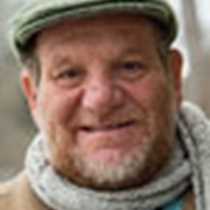When most guests hear about Port Lockroy, it is the excitement of shopping in the only gift shop in Antarctica they will encounter that sparks their interest. Port Lockroy however, is more than that. Established in 1944 as part of the secret wartime initiative to monitor German shipping movements, it eventually became a civilian operation to conduct actual scientific studies, until 1964 when its days as an active base ended. After restoration, it now serves as both a gift shop and a museum. People come for the shopping, but are soon surprised by the in-depth view they’ll get into the life of those whom once served here.
Visiting the kitchen, with the tins of dried vegetables, and other food stores of a remote field station makes you imagine what dinner might have been like. Seeing the long johns hung to dry in the corner, you can almost feel the cold that the men would have endured during the long winter nights. Stepping into the bunk room, you can feel the relief they must have felt, retiring to the one space at the station they could call their own. Personal items adorned the wall of each bunk, and murals of starlets of their day decorated the walls. At the makeshift bar stuck in a corner, you can hear the ghosts of the stories the men would have told about the home and the people they left behind.
After hearing of the exploits of the many explorers who have come to Antarctica, here at Port Lockroy, we discovered a physical connection to a few of the people who braved the Antarctic winters, in the name of country and science.
The museum and gift shop are not the only visitation sites at Port Lockroy though, there is also Jougla Point, the home of gentoo penguins, Antarctic shags, and typically a few Weddell seals lounging in the snow. The nesting birds all had chicks and the downy little bodies of young penguins and shags were a magnet for our camera lenses. The seals gave us something not only to photograph, but mesmerized us with their melodic voices as they “sang” while they lay in the snow at the edge of the sea.
Back on board it was time for lunch and a talk on “Humpback Whales in the Southern Ocean” given by Dr. Andy Szabo, one of our esteemed naturalists. It filled the time it took us to reach our next destination, Wilhelmina Bay. Although we have been seeing humpback whales in many of the places we have ventured, Wilhelmina is a special place where we spent time enjoying these magnificent animals. We now had a new understanding of them after Andy’s program, and saw them through enlightened eyes.
This evening, there was one more highlight to the day, this time served to us by our dining room as our taste buds were indulged with a traditional Argentine asado, or Argentine barbeque. It is a meal meant to be savored slowly and with friends. Our day was complete.







